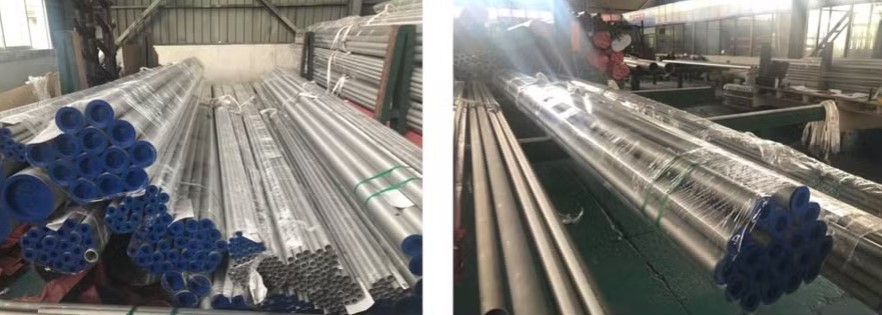STS316L
Follows the Korean Standard (KS) for 316L stainless steel, equivalent to:
JIS SUS316L (Japan), ASTM/AISI 316L (UNS S31603), EN 1.4404 (Europe).
"L" indicates ultra-low carbon (≤0.03%), designed to prevent intergranular corrosion in welded structures.
STS316LN
"LN" denotes low carbon + nitrogen addition (≤0.03% C, with intentional nitrogen content).
Equivalent to:
JIS SUS316LN (Japan), ASTM/AISI 316LN (UNS S31653), EN 1.4429 (Europe).
Nitrogen (N) is added to enhance mechanical properties while maintaining low-carbon benefits.
| Element | STS316L (S31603) | STS316LN (S31653) |
|---|---|---|
| Carbon (C) | ≤0.03% | ≤0.03% |
| Nitrogen (N) | ≤0.10% (typically trace) | 0.10–0.16% |
| Chromium (Cr) | 16.0–18.0% | 16.0–18.0% |
| Nickel (Ni) | 10.0–14.0% | 10.0–14.0% |
| Molybdenum (Mo) | 2.0–3.0% | 2.0–3.0% |
| Property | STS316L | STS316LN |
|---|---|---|
| Yield Strength (MPa) | ≥170 (25 ksi) | ≥245 (35.5 ksi) |
| Tensile Strength (MPa) | ≥485 (70.3 ksi) | ≥550 (79.8 ksi) |
| Elongation (%) | ≥40% | ≥30% |
| Hardness (HB) | ≤217 | ≤220 |
| Weldability | Excellent; no post-weld heat treatment needed | Similar to STS316L; nitrogen has minimal impact on weldability (no increased risk of intergranular corrosion due to low carbon). |
Intergranular Corrosion Resistance
Both have identical low carbon content (≤0.03%), so neither forms chromium carbides (Cr₂₃C₆) during welding or heat exposure.
No significant difference in intergranular corrosion resistance.
Pitting/Crevice Corrosion Resistance
Same Mo content (2.0–3.0%), so resistance to chloride (Cl⁻) environments (e.g., seawater, brine) is nearly identical.
Nitrogen in STS316LN may slightly improve resistance to high-temperature oxidation and stress corrosion cracking (SCC) in some acidic chloride environments, though this is not a primary design feature.
General Corrosion Resistance
Both offer excellent resistance to organic acids, alkalis, and neutral solutions, similar to standard 316 stainless steel.

